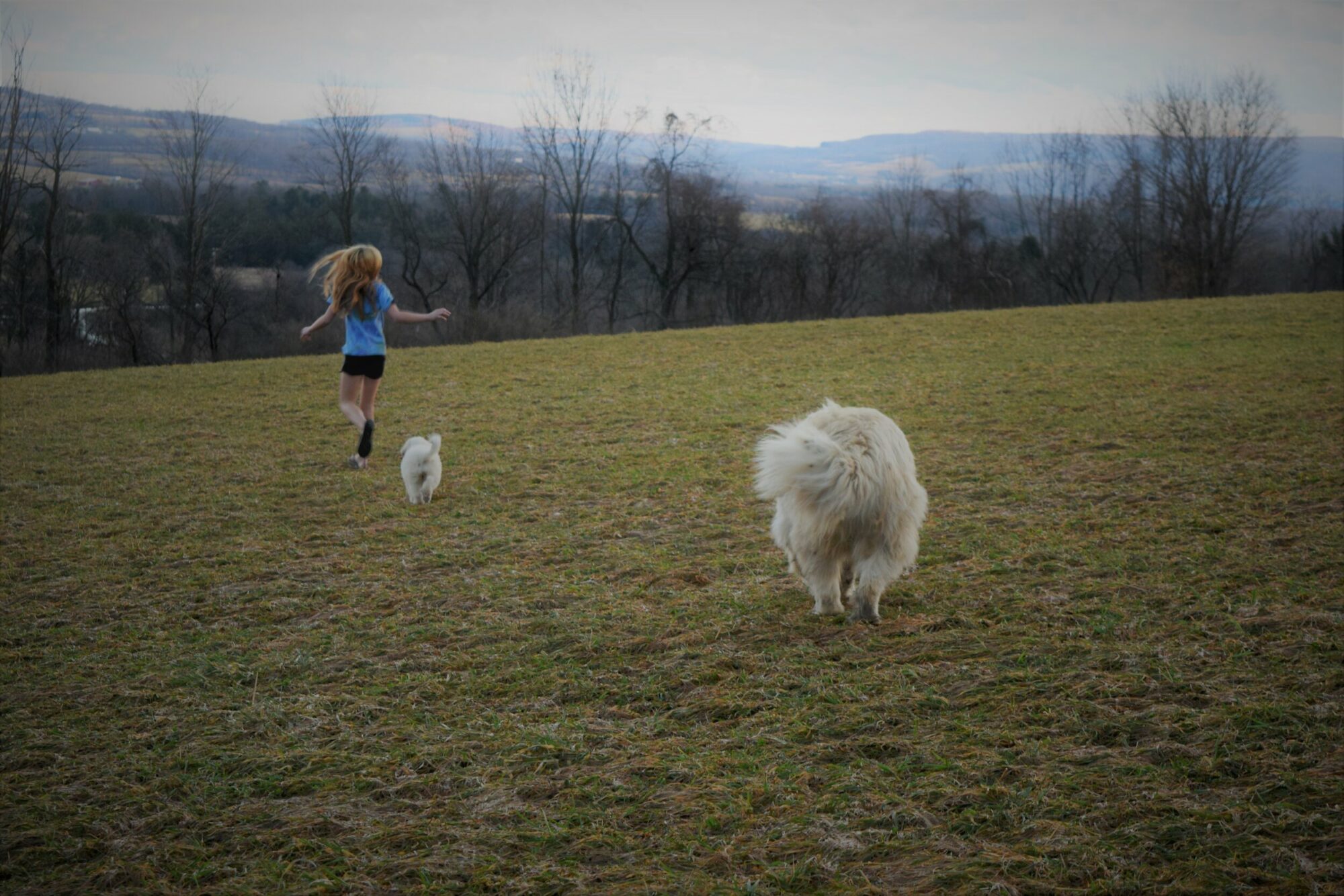Before we moved to the farm, I had only a vague sense of the changing of the seasons. Sure, I noticed the dogwoods bloom in the spring and the first glimpse of a robin. But the simple virtue of being outside every day—tending to animals, preparing farm equipment for summer’s use, fixing fences, and the myriad of other outdoor tasks required day in and day out—lays bare the reality that is the earth waking from a long winter’s slumber. I had never truly appreciated how heartbreakingly beautiful spring can be.
But spring isn’t always pretty on our farm. Where once was a dazzling white blanket of snow, is a virtual mine field—representing a winter’s worth—of dog doo glistening in the warm spring sun. Last season’s dead grass is laid flat, reminding us of where we left buckets, fencing parts, and various equipment scattered about that was never put away the previous fall.
Spring starts as the ground thaws and the patches of snow turn to rivulets and rivers running down the hillside. It is then that we enter “Mud Season”. I suppose if you live in town and have a dog, for example, you’ll know it’s mud season when you need to wipe her feet after going out for a walk and coming back into the house. To truly appreciate mud season on the farm, however, take that little bit of mud on your dog’s paws and multiply it by infinity. Mud is everywhere on the farm.
I know mud season has officially arrived when I try to move a round bale with the skid steer and there’s far more skidding than steering, or when I try to work on fence in a particularly wet area and the combination of mud and clay sticking to the bottoms of my boots seems to add about 20 pounds each. My husband will try to spread a load of manure on the hay field and the mud and the weight of the load in the spreader cause him to skate around the field, with little ability to stop. Just steer in the approximate direction you want to go and hope for the best. And when you’re done, decide not to spread anything again until the ground is dry—a ridiculous proclamation, because mud season sticks around far longer than you can ever imagine.
Mud season makes springtime particularly tough because farmers are so anxious to get into their fields and get things ready for the busy summer. The fact is mud season can be fairly dangerous. The farmer has to look at hills and even the slightest incline with completely different eyes during mud season—much like a dry sidewalk looks completely different than one with a thin, sheer layer of ice. One of my husband’s favorite mud season stories was from when he was a high school kid, pulling a load of manure for his neighbor along a narrow lane on a hillside. He remembers getting just enough off of the lane for the manure spreader behind him to start a sideways slide down the hill, pulling him and the tractor sideways, then backwards down to the bottom of the hill. I can just picture him, a skinny 16-year-old kid with white knuckles gripping the steering wheel and going for what could have been the last ride of his life. Thankfully, neither the tractor nor the spreader rolled, but the experience was completely nerve-wracking.
Avoiding mud is the farmer’s first line of defense. My husband likes to joke that getting anywhere on our property is a lot like that game we all used to play as kids…the one where you have to stay on the living room furniture because the floor is lava. In this case, it’s the field that is lava. He’ll look for dry spots in the field that he can “hop” to—places like that old lane he knows is fairly compacted and should be dry…mapping out how he’ll get across the muddy field safely. If he doesn’t think far ahead, or if he doesn’t know the field well enough to avoid those tricky, always-wet spots that probably have a spring under them or something—he can get himself into real trouble. If you would like just a taste of how potentially dangerous and unnerving mud season can be on the farm, feel free to go to youtube.com and search “stuck tractor,” where there are literally hundreds of heart-stopping videos of tractors stuck up to their cabs in mud—and farmers trying everything within their power to get them out.
On our farm, and because we have children, mud season is also known as “lost boot” season. Our eldest daughter had visited the neighbor’s pasture one gorgeous spring day and came back with only one boot. She had decided to explore a very mucky pasture where our neighbor’s cows had been spending their days. The boot had been sucked in by the mud and all her efforts to retrieve it just seemed to bury it further. At least in this case, we had a good laugh because our daughter learned a good lesson and she was no worse for the wear. Both of our children have lost shoes or boots at one time or another, although I suspect I may sound a little crazy when I ask them, “Where are your boots?!?”
